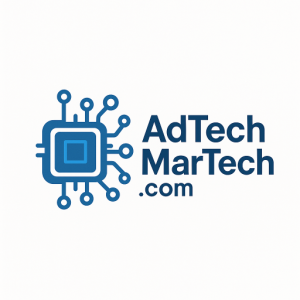[ad_1]
In today’s digital landscape, advertising technology—or Ad Tech—plays a crucial role in shaping how brands connect with consumers. With the rapid evolution of marketing strategies, understanding the fundamental tools and principles of Ad Tech is essential for businesses looking to succeed. This article explores the key components of Ad Tech, its significance, and how it drives marketing success.
What is Ad Tech?
Ad Tech encompasses the software and tools used by companies to manage, deliver, and analyze their marketing campaigns. These technologies facilitate the purchasing of advertising space, automate processes, and provide insights into campaign effectiveness. From programmatic buying to data management platforms (DMPs), Ad Tech streamlines operations, making campaigns more efficient and effective.
Key Components of Ad Tech
1. Demand-Side Platforms (DSPs)
DSPs allow advertisers to purchase ad space from various exchanges through a single interface. They enable the automated buying of digital advertising across multiple platforms, optimizing budget allocation in real time. By leveraging algorithms and user data, DSPs help marketers target specific audiences, enhancing the likelihood of conversion.
2. Supply-Side Platforms (SSPs)
Conversely, SSPs are tools used by publishers to manage their ad inventory and maximize revenue. They connect publishers with multiple ad exchanges, allowing them to sell their advertising space programmatically. SSPs help streamline the selling process and optimize pricing, ensuring publishers get the best possible returns.
3. Ad Exchanges
Ad exchanges operate as marketplaces where DSPs and SSPs can buy and sell inventory. They facilitate real-time bidding (RTB), allowing multiple advertisers to compete for ad space. This competitive environment drives prices to reflect true market value and enables advertisers to target their desired audiences more effectively.
4. Data Management Platforms (DMPs)
DMPs are crucial for collecting, analyzing, and managing audience data from various sources. They enable marketers to create detailed customer profiles, segment audiences, and inform targeted advertising strategies. By providing insights into consumer behavior, DMPs help optimize campaigns to ensure they reach the right people at the right time.
5. Customer Relationship Management (CRM) Systems
While not exclusively an Ad Tech tool, CRM systems play a vital role in managing customer interactions and data. Integrated with Ad Tech, CRMs enhance audience insights, allowing marketers to tailor their campaigns based on customer history and preferences. This synergy improves overall marketing effectiveness and customer engagement.
The Importance of Ad Tech in Modern Marketing
1. Increased Efficiency
Ad Tech has revolutionized the speed and efficiency of marketing campaigns. Automation allows marketers to execute complex strategies quickly, minimizing manual tasks and reducing time-to-market. This efficiency translates to cost savings and better resource allocation.
2. Enhanced Targeting Capabilities
With advanced data analysis tools, Ad Tech enables precise audience targeting. By utilizing first-party (data collected directly from users) and third-party data (data collected from external sources), marketers can segment audiences based on demographics, interests, and behaviors. This targeted approach increases the likelihood of conversions and maximizes ROI.
3. Real-Time Analytics
Ad Tech provides real-time insights into campaign performance. Marketers can track key performance indicators (KPIs) and make data-driven decisions on the fly. This flexibility allows for rapid optimization, ensuring campaigns are always aligned with audience preferences and market trends.
4. Attribution and Measurement
Understanding the effectiveness of marketing efforts is critical for success. Ad Tech allows for advanced attribution models that track consumer interactions across multiple touchpoints. This measurement helps marketers understand which channels and strategies drive conversions, facilitating informed decision-making and budget adjustments.
The Future of Ad Tech
As technology continues to evolve, so does the landscape of Ad Tech. Emerging trends such as artificial intelligence (AI), machine learning, and enhanced privacy regulations will shape the future of advertising. AI-driven tools are expected to improve targeting accuracy and automate more complex processes, while privacy regulations may necessitate more transparent practices and a focus on consumer trust.
Conclusion
Ad Tech is a pivotal element of modern marketing strategies, driving efficiency, targeting precision, and measurable results. By understanding the various tools and technologies within this domain, marketers can leverage them to enhance their campaigns and achieve success in an increasingly competitive digital landscape. As the industry continues to evolve, staying informed about these advancements will be essential for any marketer looking to thrive in the age of digital advertising.
[ad_2]





